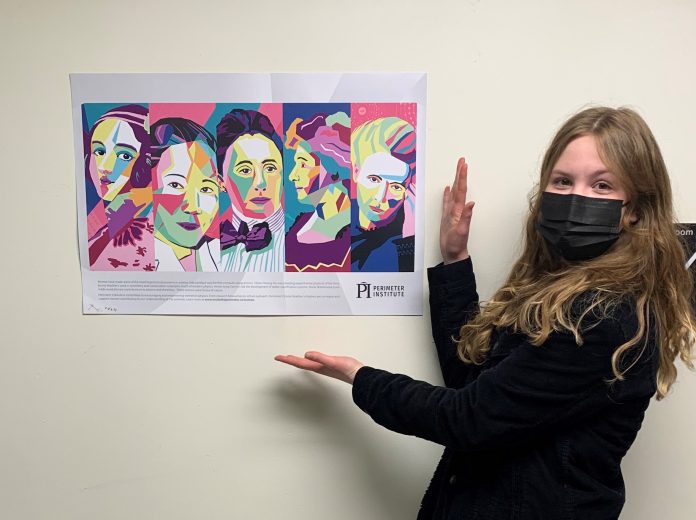By Khalid Filali
Maggie Vandenberg is a Grade 12 student at Nepean High School (NHS) and a founding member of the Women in Science, Technology, Engineering, and Math (WiSTEM) club. She is passionate about math and sciences and plans to earn a degree in biomedical engineering after high school.
Maggie was inspired to pursue STEM in university by her older sister, who is currently studying to become an engineer. Maggie?s sister gave her amazing advice and shared her own experiences as a woman in a male-dominated engineering program.
When asked why she started the WiSTEM club, Maggie said, “I noticed that there was an opportunity to encourage other women peers to feel supported in pursuing STEM post-secondary studies. My classmate Karina Gruson and I decided to create the Women in STEM club at NHS to empower individuals of all demographics to pursue STEM-related education and career opportunities.”
From Marie Curie?s pivotal research in radioactivity; to Rosalind Franklin?s work in discovering DNA; to Grace Hopper?s contributions to computer science, history is full of women who have made, and continue to make enormous contributions to the STEM fields. Despite that, women are still considerably underrepresented and underpaid in STEM jobs.
According to data from the UN Scientific Education and Cultural Organization (UNESCO), fewer than 30 per cent of researchers worldwide are women, and only 30 per cent of female students select STEM-related fields in higher education. Only 39 per cent of STEM university graduates in Canada are women, and women with STEM degrees are more likely to be unemployed and have salaries below the median in comparison to their male counterparts with STEM degrees.
Although there has been significant progress in addressing this issue, there?s still a lot of work to be done in bridging the gender gap within STEM fields. Maggie and her peers believe the WiSTEM club can empower women in Nepean?s community and help bridge that gap.
One way they accomplish this is by showcasing female scientific role models whose contributions fundamentally changed their respective fields.
“Our weekly meetings include profiling historical and present day female leaders in STEM. Karina and I—along with our teacher supervisor Ms. Gerards—have lots of fun researching the lives of female scientists and sharing their accomplishments with others,” says Maggie.
“Some teachers go out of their way to include discussions about female scientists in their classroom, which is a great way to help improve the gender gap in STEM. One thing I have noticed is that there has been a deliberate effort to highlight historical female scientists. For example, there are posters throughout the science department at NHS of scientists like Rosalind Franklin, highlighting their contributions to STEM. These posters were not there when I was in Grade 9,” she adds.
But there?s room for improvement—at both the school board and provincial level.
“Our curriculum and textbooks feature many innovative scientists who have made revolutionary discoveries—however, not many of them are women,” Maggie notes.
In an exciting world of emerging technologies, Maggie hopes the club will boost STEM participation for the next generation of Canadian women.
“I hope that the club continues to inspire students to pursue a career in STEM and continue to explore and showcase the accomplishments of historical and present day women in STEM. I also hope the club maintains inclusivity and reinforces the notion that everyone can choose a career in STEM.”
Maggie is one of many changemakers in our community who are working towards a more inclusive and equitable future for all Canadians. Nepean?s Women in STEM club is just one step in that direction, but it has already had a marvelous impact on our school, and will no doubt only continue to grow and flourish.
